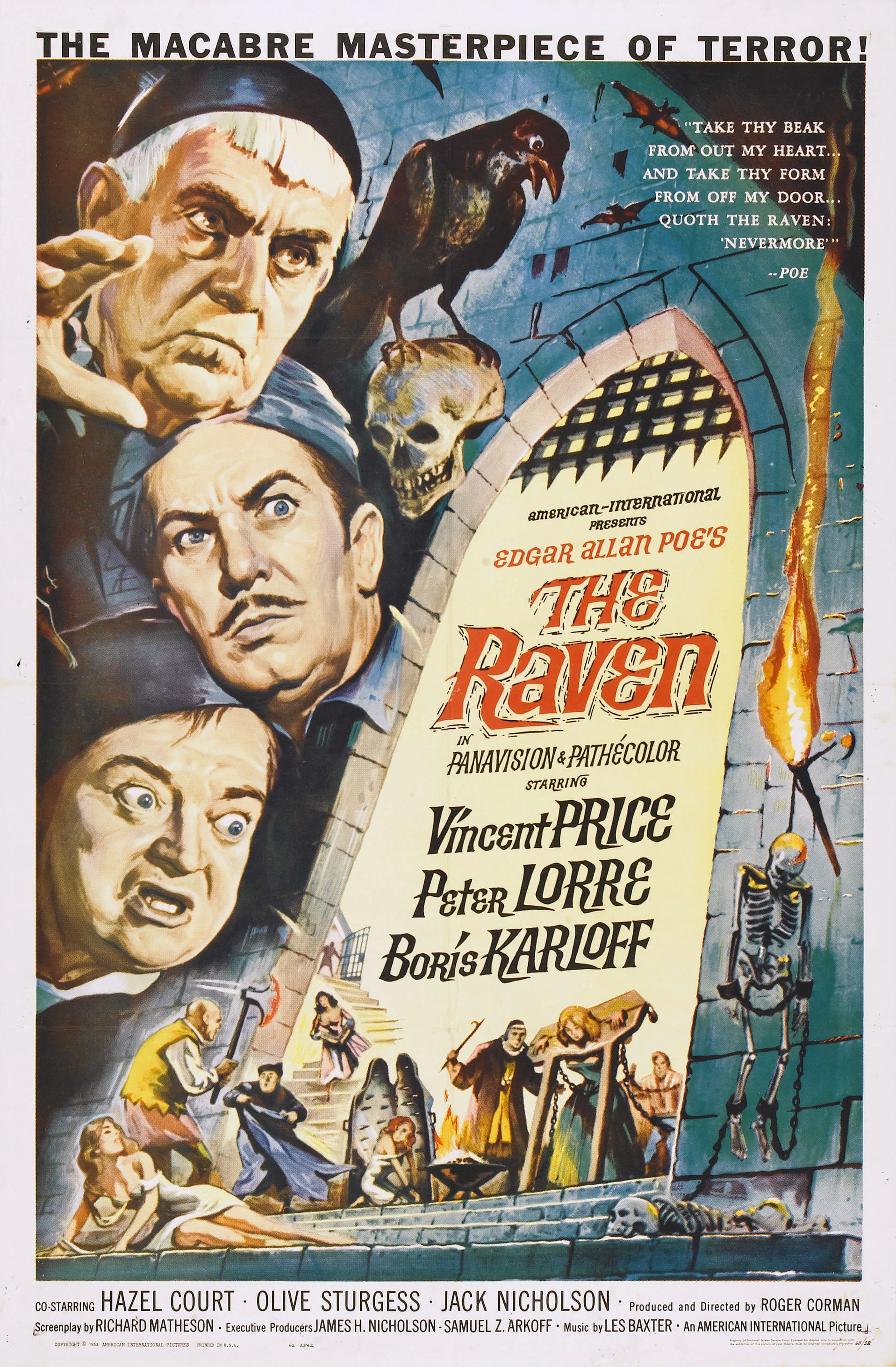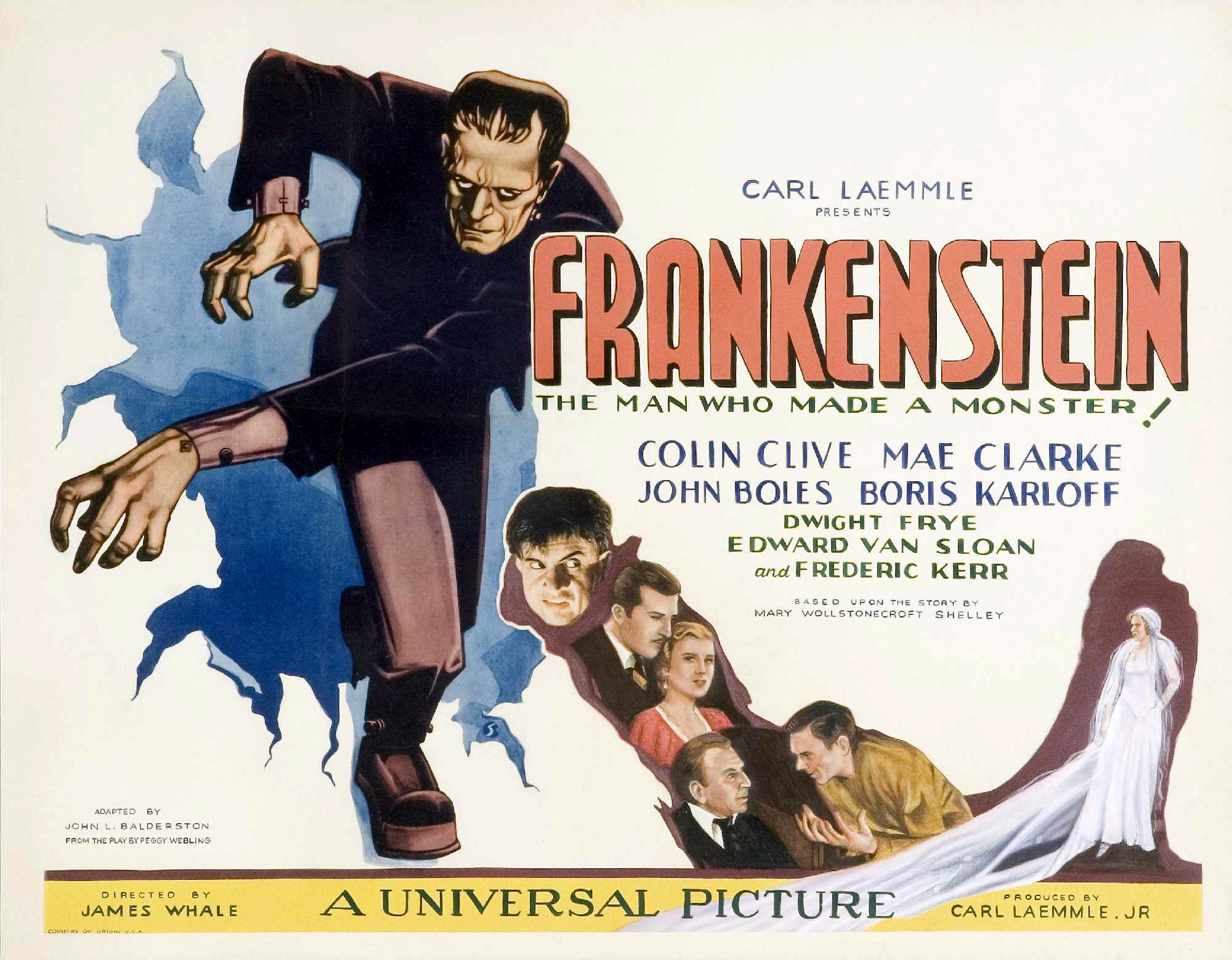|
Nightmares In Red, White And Blue
''Nightmares in Red, White and Blue: The Evolution of the American Horror Film'' is a 2009 American documentary film directed by Andrew Monument, based on the 2004 book of the same name by Joseph Maddrey. The film examines the appeal of the horror film genre to audiences and how the genre has continually evolved to reflect changing societal fears in the United States during the 20th and 21st centuries. ''Nightmares in Red, White and Blue'' features interviews with such subjects as Larry Cohen, Joe Dante, John Carpenter, Darren Lynn Bousman, Mick Garris, Tom McLoughlin, and George A. Romero, and is narrated by Lance Henriksen. It has received generally positive reviews. Synopsis The documentary mainly focuses on the evolution of the horror film genre in the United States, how horror films have adapted over time in accordance with the changing fears of the American public, and the connections between major events in the U.S. and the attraction that horror films have to moviegoing ... [...More Info...] [...Related Items...] OR: [Wikipedia] [Google] [Baidu] |
Joseph Maddrey
Joseph Maddrey (born 1979) is an American author and screenwriter known for writing and producing the documentary '' Nightmares in Red, White and Blue: The Evolution of the American Horror Film''. He worked as a co-author with Lance Henriksen on Henriksen's autobiography, ''Not Bad for a Human - The Life and Films of Lance Henriksen'', and also co-wrote the comic book series '' To Hell You Ride'' with Henriksen as well. Bibliography Books *''Nightmares in Red, White and Blue: The Evolution of the American Horror Film'' (McFarland; 2004) *''The Making of T.S. Eliot: A Study of the Literary Influences'' (McFarland; 2009) *''Not Bad for a Human: The Life and Films of Lance Henriksen'', co-written with Lance Henriksen (Alexander Henriksen Publishers; 2011) *''To Hell You Ride" graphic novel'', co-written with Lance Henriksen and Tom Mandrake Tom Mandrake (born 1956) is an American comics artist, perhaps best known for his collaborations with writer John Ostrander on several series, ... [...More Info...] [...Related Items...] OR: [Wikipedia] [Google] [Baidu] |
Silent Era
A silent film is a film with no synchronized recorded sound (or more generally, no audible dialogue). Though silent films convey narrative and emotion visually, various plot elements (such as a setting or era) or key lines of dialogue may, when necessary, be conveyed by the use of title cards. The term "silent film" is something of a misnomer, as these films were almost always accompanied by live sounds. During the silent era that existed from the mid-1890s to the late 1920s, a pianist, theater organist—or even, in large cities, a small orchestra—would often play music to accompany the films. Pianists and organists would play either from sheet music, or improvisation. Sometimes a person would even narrate the inter-title cards for the audience. Though at the time the technology to synchronize sound with the film did not exist, music was seen as an essential part of the viewing experience. "Silent film" is typically used as a historical term to describe an era of cinema ... [...More Info...] [...Related Items...] OR: [Wikipedia] [Google] [Baidu] |
Exploitation Film
An exploitation film is a film that tries to succeed financially by exploiting current trends, niche genres, or lurid content. Exploitation films are generally low-quality "B movies", though some set trends, attract critical attention, become historically important, and even gain a cult following. History Exploitation films may feature suggestive or explicit sex, sensational violence, drug use, nudity, gore, destruction, rebellion, mayhem, and the bizarre. Such films were first seen in their modern form in the early 1920s, but they were popularized in the 60s and 70s with the general relaxing of censorship and cinematic taboos in the U.S. and Europe. An early example, the 1933 film Ecstasy, included nude scenes featuring the Austrian actress Hedy Lamarr. The film proved popular at the box office but caused concern for the American cinema trade association, the MPPDA. Hildegard Esper and Dwain Esper are husband and wife film directors and producers who made some of the most ... [...More Info...] [...Related Items...] OR: [Wikipedia] [Google] [Baidu] |
The Texas Chain Saw Massacre
''The Texas Chain Saw Massacre'' is a 1974 American horror film produced and directed by Tobe Hooper from a story and screenplay by Hooper and Kim Henkel. It stars Marilyn Burns, Paul A. Partain, Edwin Neal, Jim Siedow and Gunnar Hansen, who respectively portray Sally Hardesty, Franklin Hardesty, the hitchhiker, the proprietor, and Leatherface. The film follows a group of friends who fall victim to a family of cannibals while on their way to visit an old homestead. The film was marketed as being based on true events to attract a wider audience and to act as a subtle commentary on the era's political climate. Although the character of Leatherface and minor story details were inspired by the crimes of murderer Ed Gein, its plot is largely fictional. It is the first film of the ''Texas Chainsaw Massacre'' franchise. Hooper produced the film for less than $140,000 ($ adjusted for inflation) and used a cast of relatively unknown actors drawn mainly from central Texas, where the ... [...More Info...] [...Related Items...] OR: [Wikipedia] [Google] [Baidu] |
Night Of The Living Dead
''Night of the Living Dead'' is a 1968 American independent horror film directed, photographed, and edited by George A. Romero, with a screenplay by John Russo and Romero, and starring Duane Jones and Judith O'Dea. The story follows seven people who are trapped in a rural farmhouse in western Pennsylvania, which is under assault by an enlarging group of flesh-eating, undead ghouls. Having gained experience through directing television commercials and industrial films for their Pittsburgh-based production company The Latent Image, Romero and his friends Russo and Russell Streiner decided to fulfill their ambitions to make a feature film. Electing to make a horror film that would capitalize on contemporary commercial interest in the genre, they formed a partnership with Karl Hardman and Marilyn Eastman of Hardman Associates called Image Ten. After evolving through multiple drafts, Russo and Romero's final script primarily drew influence from Richard Matheson's 1954 novel '' I A ... [...More Info...] [...Related Items...] OR: [Wikipedia] [Google] [Baidu] |
Creature With The Atom Brain (1955 Film)
''Creature with the Atom Brain'' is a 1955 American zombie horror science fiction film directed by Edward L. Cahn and starring Richard Denning. American gangster Frank Buchanan (Michael Granger) forces former Nazi scientist Wilhelm Steigg (Gregory Gaye) to create zombies by resurrecting corpses through atomic radiation in order to help him exact revenge on his enemies. ''Creature with the Atom Brain'' was released as the bottom half of a double feature with ''It Came from Beneath the Sea''. Plot A hulking zombie breaks into a mansion and kills a gangster named Hennesy. The bloodstains left behind at the crime scene are radioactive, and the killer's fingerprints are of a man who had died days before the murder; the police are baffled. Crime boss Frank Buchanan, who had been forced to flee the United States before he was deported, was betrayed by his own underworld gang members. While traveling in Europe, he finds ex-Nazi scientist Wilhelm Steigg (Gaye) trying to reanimate the de ... [...More Info...] [...Related Items...] OR: [Wikipedia] [Google] [Baidu] |
Tarantula (film)
''Tarantula!'' is a 1955 American science-fiction monster film produced by William Alland and directed by Jack Arnold. It stars John Agar, Mara Corday, and Leo G. Carroll. The film is about a scientist developing a miracle nutrient to feed a rapidly growing human population. In its unperfected state, the nutrient causes extraordinarily rapid growth, creating a deadly problem when a tarantula test subject escapes and continues to grow larger and larger. The screenplay by Robert M. Fresco and Martin Berkeley was based on a story by Arnold, which was in turn inspired by Fresco's teleplay for the 1955 ''Science Fiction Theatre'' episode "No Food for Thought", also directed by Arnold. The film was distributed by Universal Pictures as a Universal-International release, and reissued in 1962 through Sherman S. Krellberg's Ultra Pictures. Plot A severely deformed man is found dead in the Arizona desert. Dr. Matt Hastings, a doctor from the nearby town of Desert Rock, Arizona, is called ... [...More Info...] [...Related Items...] OR: [Wikipedia] [Google] [Baidu] |
B Movie
A B movie or B film is a low-budget commercial motion picture. In its original usage, during the Golden Age of Hollywood, the term more precisely identified films intended for distribution as the less-publicized bottom half of a double feature (akin to B-sides for recorded music). However, the U.S. production of films intended as second features largely ceased by the end of the 1950s. With the emergence of commercial television at that time, film studio B movie production departments changed into television film production divisions. They created much of the same type of content in low budget films and series. The term ''B movie'' continues to be used in its broader sense to this day. In its post-Golden Age usage, B movies can range from lurid exploitation films to independent arthouse films. In either usage, most B movies represent a particular genre—the Western was a Golden Age B movie staple, while low-budget science-fiction and horror films became more popular in the 19 ... [...More Info...] [...Related Items...] OR: [Wikipedia] [Google] [Baidu] |
Atomic Age
The Atomic Age, also known as the Atomic Era, is the period of history following the detonation of the first nuclear weapon, The Gadget at the ''Trinity'' test in New Mexico, on July 16, 1945, during World War II. Although nuclear chain reactions had been hypothesized in 1933 and the first artificial self-sustaining nuclear chain reaction ( Chicago Pile-1) had taken place in December 1942, the Trinity test and the ensuing bombings of Hiroshima and Nagasaki that ended World War II represented the first large-scale use of nuclear technology and ushered in profound changes in sociopolitical thinking and the course of technological development. While atomic power was promoted for a time as the epitome of progress and modernity, entering into the nuclear power era also entailed frightful implications of nuclear warfare, the Cold War, mutual assured destruction, nuclear proliferation, the risk of nuclear disaster (potentially as extreme as anthropogenic global nuclear winter), as ... [...More Info...] [...Related Items...] OR: [Wikipedia] [Google] [Baidu] |
World War II
World War II or the Second World War, often abbreviated as WWII or WW2, was a world war that lasted from 1939 to 1945. It involved the vast majority of the world's countries—including all of the great powers—forming two opposing military alliances: the Allies and the Axis powers. World War II was a total war that directly involved more than 100 million personnel from more than 30 countries. The major participants in the war threw their entire economic, industrial, and scientific capabilities behind the war effort, blurring the distinction between civilian and military resources. Aircraft played a major role in the conflict, enabling the strategic bombing of population centres and deploying the only two nuclear weapons ever used in war. World War II was by far the deadliest conflict in human history; it resulted in 70 to 85 million fatalities, mostly among civilians. Tens of millions died due to genocides (including the Holocaust), starvation, ma ... [...More Info...] [...Related Items...] OR: [Wikipedia] [Google] [Baidu] |
Frankenstein (1931 Film)
''Frankenstein'' is a 1931 American pre-Code science fiction horror film directed by James Whale, produced by Carl Laemmle Jr., and adapted from a 1927 play by Peggy Webling, which in turn was based on Mary Shelley's 1818 novel ''Frankenstein; or, The Modern Prometheus''. The Webling play was adapted by John L. Balderston and the screenplay written by Francis Edward Faragoh and Garrett Fort, with uncredited contributions from Robert Florey and John Russell. ''Frankenstein'' stars Colin Clive as Henry Frankenstein, an obsessed scientist who digs up corpses with his assistant in order to assemble a living being from body parts. The resulting creature, often known as Frankenstein's monster, is portrayed by Boris Karloff. The make-up for the monster was provided by Jack Pierce. Alongside Clive and Karloff, the film's cast also includes Mae Clarke, John Boles, Dwight Frye, and Edward Van Sloan. Produced and distributed by Universal Pictures, the film was a commercial success up ... [...More Info...] [...Related Items...] OR: [Wikipedia] [Google] [Baidu] |
James Whale
James Whale (22 July 1889 – 29 May 1957) was an English film director, theatre director and actor, who spent the greater part of his career in Cinema of the United States, Hollywood. He is best remembered for several horror films: ''Frankenstein (1931 film), Frankenstein'' (1931), ''The Old Dark House (1932 film), The Old Dark House'' (1932), ''The Invisible Man (1933 film), The Invisible Man'' (1933) and ''Bride of Frankenstein'' (1935), all considered classics. Whale also directed films in other genres, including the 1936 Show Boat (1936 film), film version of the musical ''Show Boat''. Whale was born into a large family in Dudley, Worcestershire now Metropolitan Borough of Dudley. He discovered his artistic talent early on and studied art. With the outbreak of World War I he enlisted in the British Army and became an officer. He was captured by the Germans and during his time as a prisoner of war he realised he was interested in drama. Following his release at the end ... [...More Info...] [...Related Items...] OR: [Wikipedia] [Google] [Baidu] |








